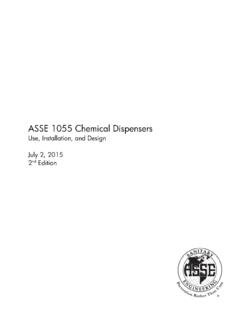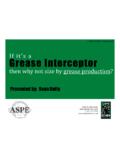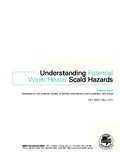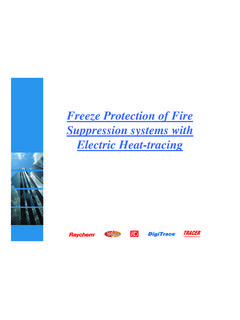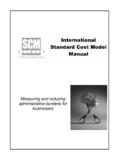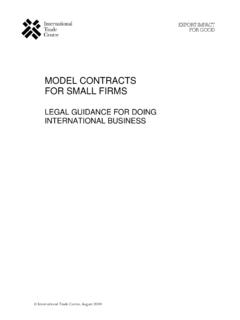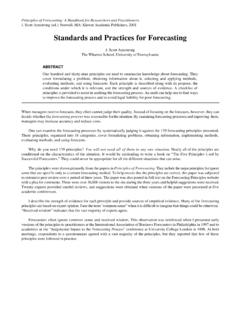Transcription of Extended Coverage Sprinklers
1 Extended Coverage Sprinklers Welcome ASPE. Wally Barker sprinkler Systems 101. MATERIALS OF CONSTRUCTION. The components that make up a sprinkler head are: Frame or casting Deflector Fusible element or frangible bulb Pip Cap Pintle Screw Belleville Spring Viking Sprinklers utilize low zinc content brass to provide a more resilient frame or casting. This low zinc content protects the sprinkler from de-zincification. The Bellville Spring seals the water way of the sprinkler . This metal to metal sealing mechanism allows the waterway to clear even when no pressure is on the inlet of the sprinkler head. Laboratory Approvals AGENCY STANDARD. UL & c-UL (ULC) NFPA & UL Requirements FM FM Requirements (NFPA = minimum). LPC LPC Standard VDS VDS Standard NYC & LA Specific City approvals Types of sprinkler Heads Control Mode Standard Response and Quick Response Standard Coverage Upright Pendent Sidewall Extended Coverage Upright Pendent Sidewall Control Mode Special Application Large Drop sprinkler Suppression ESFR upright and Pendent Residential Control Mode Sprinklers Control Mode Sprinklers are separated in the following Categories: Standard Coverage - Standard Response Standard Coverage - Quick Response Extended Coverage Standard Response Extended Coverage Quick Response Dry Barrel Standard Response/Quick Response Storage Standard/Quick Response sprinkler Head Identification sprinkler Model or SIN Number SIN Number The Model or SIN ( sprinkler Identification) Number is a number assigned to a sprinkler head.
2 The number is stamped on the sprinkler deflector as a means of identifying the sprinkler . TEMPERATURE RATINGS. FOR GLASS BULB HEADS. 155 F 175 F 200or212 F 286 F 360 F 500 F. (68 C) (79 C) (93or100 C) (141 C) (182 C) (260 C). Red Yellow Green Blue Mauve Black Ordinary Intermediate High Extra Ultra High High Max Ceil Max Ceiling Max Ceil Max Ceil Max Ceil Temp Temp Temp Temp Temp 100 F 150 F 225 F 300 F 465 F. (38 C) (65 C) (107 C) (149 C) (240 C). Standard Response Elements 5 mm bulb 155 F 175 F 200or212 F 286 F. (68 C) (79 C) (93or100 C) (141 C). Red Yellow Green Blue Ordinary Intermediate High Max Ceil Max Ceiling Max Ceil Temp Temp Temp 100 F 150 F 225 F. (38 C) (65 C) (107 C). Fast Response Elements 3 mm bulb K Factors K factors are known as the coefficient of discharge. The larger the K factor in number, the more water it can discharge at a given pressure.
3 There are (3). current thread sizes used for sprinkler heads, , , and 1 threads. Do not just match the thread size when replacing a sprinkler head. Identify what orientation, K factor, and temperature prior to replacing a sprinkler . Calculating (K). Orifice Sizes Why Larger K Factors? Develop larger water droplets that penetrate the fire plume Discharges same water density at lower pressures Lower starting pressures may save the designer a pipe size in their calculations, which will lower the cost of the system installation. Design Basics NOMINAL K FACTORS- NFPA13 and Factory Mutual What is a sprinkler K- Factor . K % of Thread K % of Thread 25% 250% . 300% . 50% 350% 1 . 75% 400% 1 . Baseline 100% 450% 1 . 140% 500% 1 . 200% . sprinkler Sensitivity Thermal Response Requirements sprinkler SENSITIVITY.
4 STANDARD RESPONSE. 3 Min. 51 Sec. Room Fire Test 100 Sec. Plunge Test QUICK RESPONSE. 75 Sec. Room Fire Test 14 Sec. Plunge Test RESIDENTIAL. Special Fire Test 14 Sec. Plunge Plunge Oven Response Time Index - RTI. RTI - measures the speed of response of the heat sensitive element Traditionally Fast Response Sprinklers have a thermal element with an RTI of 50 (meters-seconds)1/2. or less. ESFR's must have a thermal Strut 110 m-s . element with an RTI of 36 (meters- Glass Bulb (5mm) - 105 m-s . seconds)1/2 or less Fusible Link 26 m-s . Standard Response Sprinklers have Glass Bulb (3mm) - 36 m-s . a thermal element with an RTI of 80 Glass Bulb ( ) - 22 m-s . Heat Fin - 26 m-s . (meters-seconds)1/2 or more. MINIMUM sprinkler FLOW. Q = Water Flow K = Coefficient of Q = Area x Density Discharge P = Pressure Q=Kx P.
5 P = (Q/K)2. K = Q/ P. sprinkler Spacing Determining Area/ sprinkler Along branch lines: 1. Determine distance between Sprinklers (or to wall/obstruction). 2. Choose largest - twice distance to wall or distance to next sprinkler . This dimension will be defined as S. Between branch lines: 1. Determine distance to adjacent branch line (or to wall/obstruction). 2. Choose largest - twice distance to wall or distance to adjacent line. This dimension will be defined as L. Area/ sprinkler = S L. Design Basics sprinkler Spacing Determining Area/ sprinkler Extended Coverage or Residential Must use one of the Listed Coverage areas The actual area protected per sprinkler must fit within the Listed design Coverage area Design Basics sprinkler Spacing Determining Area/ sprinkler Extended Coverage or Residential Example: 19 x 10 room Use 20 x 20.
6 Design Basics sprinkler Spacing Determining Area/ sprinkler Extended Coverage or Residential Example: 16 x 18 room Use 18 x 18. Design Basics Determining Design Area Determining Size Starts with the chart in NFPA 13. Design Basics Determining Size Extended Coverage Must use Greater of . Coverage of five Sprinklers or area required by occupancy Example 1: Example 2: Light Hazard w/ 20x20 Light Hazard w/ 14x14. Sprinklers Sprinklers 400sf x 5 Sprinklers = 2000sf 196sf x 5 Sprinklers = 980sf LH = 1500 sf LH = 1500 sf Use 2000sf Use 1500sf Design Basics Determining Size Quick Response Sprinklers When using Quick Response . You can reduce the design area based on ceiling height (Remember: NFPA 13 limits the minimum size to 900sf). Design Basics Design Calculations Calculating End Head Flow (Q). Q = Area x Density Example.
7 15 density with 120sf Coverage per sprinkler .15 x 120 = 18gpm minimum @ end head Design Basics Calculating Pressure (P) at the End Head P = (Q K) . Q = Flow of end head K = K Factor of sprinkler Example: Q = 18gpm K = So (18 ) = Minimum Design Basics Calculating (K). Orifice Sizes Orifice Sizes are Represented by a K Factor . The K Factor is derived by the following formula: K = CD2. Basically, the larger the K, the larger the orifice. Design Basics Starting Pressure Comparison for Different Orifice Sprinklers K Factor Flow Rate Starting Pressure 26 gpm psi 26 gpm psi 26 gpm psi ( gpm) (min 7 psi). 26 gpm psi ( gpm) (min 7 psi)..20 gpm per sq. ft x 130 sq. ft. = 26 gpm Standard Coverage Sprinklers Pendent or Upright Minimum operating pressure is 7 psi. Flow rate per sprinkler is determined by area x density or minimum pressure multiplied by square root of minimum pressure (which ever is greater).
8 Standard Coverage Sprinklers Pendent and Upright Standard Coverage Sprinklers Pendent or Upright Standard Spray sprinkler Spacing (Area of Coverage ). Light Hazard (as defined by NFPA 13) : 225 sq. ft. max Ordinary Hazard (as defined by NFPA 13) : 130 sq. ft. max Extra Hazard (as defined by NFPA 13) : 100 sq. ft. max (Note: areas given for hydraulically calculated systems). Classification of Occupancies Upright and pendent spray Sprinklers shall be permitted in all occupancy hazard classifications and building construction types. * Classification of Occupancies. Occupancy classifications for this standard shall relate to sprinkler design, installation, and water supply requirements only. Occupancy classifications shall not be intended to be a general classification of occupancy hazards. * Light Hazard Occupancies.
9 Light hazard occupancies shall be defined as occupancies or portions of other occupancies where the quantity and/or combustibility of contents is low and fires with relatively low rates of heat release are expected. EXAMPLES: Churches, Clubs, Hospitals, Museums, Offices, Restaurant Seating Areas NFPA 13 limits maximum area of Coverage for Light Hazard to 225 sq. ft. per sprinkler *Plan View 15'-0 . (4,57m). 15'-0 15'-0 . (4,57m) (4,57m). Standard Coverage Sprinklers Density prescribed for Light Hazard is .10 gpm per sq. ft. *Plan View 15'-0 . (4,57m). 15'-0 15'-0 . (4,57m) (4,57m). Minimum flow rate for Sprinklers spaced 225 sq. ft. is Determined by area x density = Q. Example: .10 gpm per sq. ft. x 225 sq. ft. = gpm Classification of Occupancies Upright and pendent spray Sprinklers shall be permitted in all occupancy hazard classifications and building construction types.
10 * Classification of Occupancies. Occupancy classifications for this standard shall relate to sprinkler design, installation, and water supply requirements only. Occupancy classifications shall not be intended to be a general classification of occupancy hazards. * Ordinary Hazard (Group 1). Ordinary hazard (Group 1) occupancies shall be defined as occupancies or portions of other occupancies where combustibility is low, quantity of combustibles is moderate, stockpiles of combustibles do not exceed 8'-0 , and fires with moderate rates of heat release are expected. Examples:Restaurant Service Areas, Bakeries, Automobile Parking and Showrooms, Laundries * Ordinary Hazard (Group 2). Ordinary hazard (Group 2) occupancies shall be defined as occupancies or portions of other occupancies where the quantity and combustibility of contents are moderate to high, stockpiles do not exceed 12', and fires with moderate to high rates of heat release are expected.


